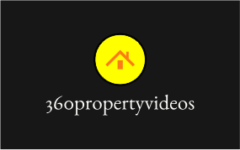Video advertising is an effective tool for real estate marketing, offering a dynamic way to showcase properties and attract potential buyers. High-impact real estate video ads can capture attention, convey key messages, and drive engagement. Here’s how to create compelling video ads that stand out and deliver results.
1. Define Your Objectives
Identify Goals:
Before creating your video ad, determine what you want to achieve. Are you promoting a new listing, highlighting an open house, or building brand awareness? Clear objectives will guide your content and messaging.
Target Audience:
Understand your target audience and tailor your video ad to their preferences and needs. Consider factors such as demographics, interests, and location to create content that resonates with your potential buyers.
2. Craft a Compelling Script
Hook Viewers Early:
Start with a strong hook to grab viewers’ attention within the first few seconds. Use intriguing visuals, compelling statements, or a question that addresses viewers’ needs or interests.
Highlight Key Features:
Focus on the property’s most attractive features and benefits. Include details such as location advantages, unique selling points, and any recent upgrades or renovations.
Include a Clear Call to Action:
Encourage viewers to take the next step, whether it’s scheduling a showing, visiting your website, or contacting you for more information. Make your call to action clear and compelling to drive engagement.

3. Focus on High-Quality Production
Invest in Good Equipment:
Use high-quality cameras and audio equipment to ensure your video ad looks and sounds professional. Clear visuals and crisp audio are essential for making a positive impression.
Consider Professional Help:
If budget allows, consider hiring a professional videographer or editor. Their expertise can elevate the quality of your video ad, ensuring it meets industry standards and effectively showcases the property.
Use Effective Lighting:
Good lighting is crucial for high-quality video. Shoot during the day when natural light is abundant, or use additional lighting to enhance the property’s appearance and create a well-lit, inviting atmosphere.
4. Incorporate Engaging Visuals
Showcase the Property:
Use a mix of wide shots, close-ups, and aerial footage to provide a comprehensive view of the property. Highlight key areas such as the living room, kitchen, bedrooms, and outdoor spaces.
Use Dynamic Camera Movements:
Incorporate smooth camera movements such as pans, tilts, and tracking shots to add visual interest. Dynamic footage can make your video ad more engaging and help viewers better appreciate the property’s layout and features.
Add Text Overlays and Graphics:
Include text overlays and graphics to emphasize important information such as property details, pricing, and contact information. Ensure these elements are clear and easy to read, and don’t clutter the screen.
5. Optimize for Different Platforms
Platform-Specific Formats:
Tailor your video ad for different platforms by using appropriate formats and dimensions. For example, use square (1:1) or vertical (4:5) formats for Instagram and Facebook, and horizontal (16:9) for YouTube.
Adjust Length:
Keep your video ad length appropriate for the platform and content. For social media, aim for shorter videos (15-30 seconds) that capture attention quickly. For YouTube or longer ads, you can go up to 1-2 minutes.
Include Platform-Specific Elements:
Optimize your video ad with platform-specific features such as captions, hashtags, and clickable links. This enhances engagement and ensures your ad is effective on each platform.
6. Enhance with Music and Voiceovers
Choose the Right Music:
Select background music that complements the mood and style of your video ad. Music should enhance the viewing experience without overpowering the visuals or voiceover.
Professional Voiceover:
Consider using a professional voiceover to narrate the script. A well-delivered voiceover can add a polished and engaging touch to your video ad, making it more effective in conveying your message.
7. Analyze and Adjust
Monitor Performance:
Track the performance of your video ad using analytics tools. Monitor metrics such as views, engagement rates, and click-through rates to assess its effectiveness and make data-driven improvements.
Gather Feedback:
Seek feedback from viewers and stakeholders to understand what worked well and what can be improved. Use this input to refine your video ad strategy and create even more impactful content in the future.
Test and Iterate:
Experiment with different video ad variations to see which ones perform best. Test different hooks, visuals, and calls to action to find the most effective approach for your audience.
Conclusion
Creating high-impact real estate video ads involves careful planning, quality production, and effective optimization. By defining your objectives, crafting a compelling script, focusing on high-quality visuals, and tailoring your content for different platforms, you can create engaging video ads that capture attention and drive results. Incorporate professional elements such as music and voiceovers to enhance your video ads and continuously analyze performance to refine your strategy. With these tips, you’ll be well-equipped to produce video ads that elevate your real estate marketing efforts and attract potential buyers.

